Following the rules is the key to marketing success.
Coming up with a product people really want is half the battle.
Getting people to buy, use and recommend your product is the other half.
Today, there are so many marketing strategies available at our disposal that it’s easy to feel lost.
But it all comes down to the basics.
When you know the basics of marketing, you’ll find it easier to succeed.
Marketing is important and shouldn’t be taken lightly.
David Packard, the iconic co-founder of Hewlett Packard famously said: “Marketing is too important to be left to the marketing department.”
He’s right!
So what are the digital marketing rules every startup founder must live by?
(GrowthFunnel_Code)
1. Go Mobile
Mobile internet usage has been increasing over the last few years.
In fact, mobile usage has exceeded desktop.
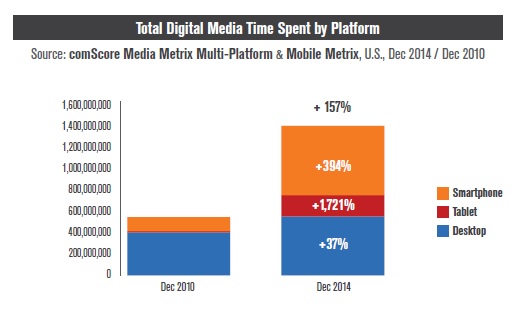
According to Statista, mobile is expected to rise even further in the years ahead.
As of 2015, worldwide mobile phone internet user penetration was 52.7 percent. In 2017, figures suggest that more than 63.4 percent of mobile phone users will access online content through their devices.
Web users are using mobile to do everything from browsing social media outlets, checking emails, and doing some online shopping.
It’s very important that you have a website that is specifically designed for both mobile and desktop users while giving them a great experience.
This is where a responsive design comes in.
A responsive design simply means a website that has been made so that all of the content, images and structure of the site remains the same on any device.
Here’s how it works:
When a user visits your website on their desktop, they are getting the full view of your website.
But when that same user visits your site from their smartphone or tablet, your site will shrink to fit on the smaller screen.
Below is an example of a responsive design:

Time Magazine uses a responsive design.
There are a lot of various mobile phones with different screen sizes. But with a responsive design you don’t have to worry because your website will run properly on all those devices.
If your goal is to convert your website visitors into customers, you must use a responsive design, or you’ll be losing a lot of potential sales.
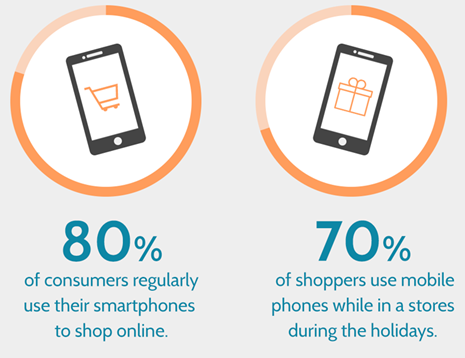
Your website will also rank higher on search engines when you use a responsive design – this means even more customers for your business.
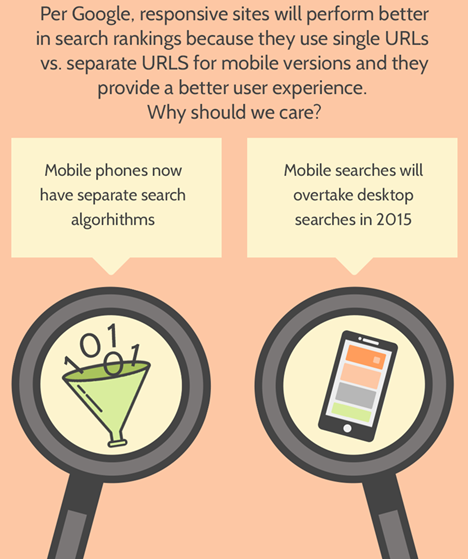
2. Never Be Afraid To Spend Money On Ads
I’m sure you’ve heard the popular phrase “It takes money to make money.”
I’ll like to say that this phrase isn’t completely true.
It’s true that if you have a good idea, or a great idea, and a team behind you, money will find you.
You may want to roll your sleeves and make it happen.
You may want to surround yourself with people who have the same vision as you. Of course, there are many instances where this works.
“A young guy comes up with an idea to make money.
He finds a property he can buy for $100,000, put $20,000 into, and sell for $150,000.
The problem is, he has no money.
So he finds an old guy with money, and they agree to split the profits 50/50. If the deal goes according to plan, they both walk away with a $15,000 profit.”
Sounds like a nice idea, right?
The problem is that this doesn’t always work when it comes to marketing a startup.
Although it’s easy to get your friends and family to help you win your first 100 – 500 users or customers, but this won’t work when you’re trying to grow to 10,000, 100,000 users.
This is where you’ll need to spend in order to grow your startup.
Maybe you’re thinking about relying on free traffic from sites like Google, Facebook, Pinterest or Instagram.
You can’t depend on free traffic from these sites.
Note: These sites are always making it harder for marketers to get free traffic because they want them to do paid advertising on their sites.
Facebook is becoming a pay to play site, meaning you have to pay to get a lot of traffic from Facebook.
Google is filling up its results with ads.
The first four results are ads:
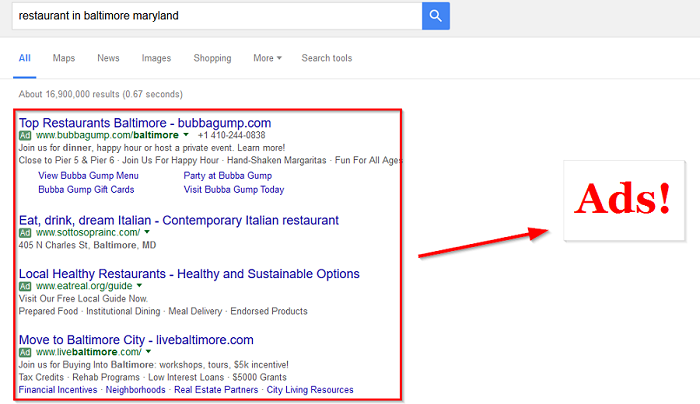
While Google organic traffic is still good, they are constantly changing their search algorithm, introducing new signals and rules.
Relying heavily on Google organic search traffic is not wise.
You could lose 50% of your traffic from Google without breaking any rules, and with no one to give you any reason.
Facebook’s average organic reach has fallen to the lowest levels.
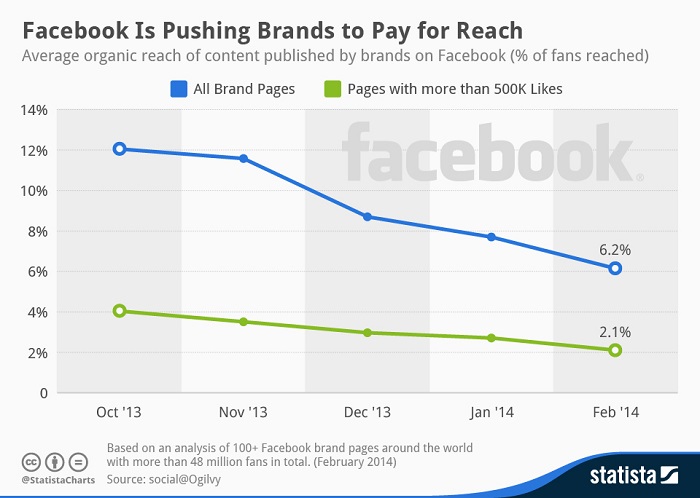
As reported by New York Times, Facebook is changing their “News Feed” to focus more on friends and family than publishers.
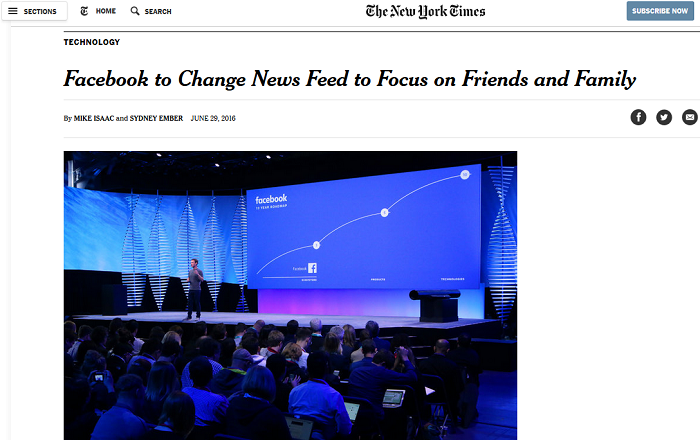
Organic reach on Facebook would become almost zero. It’ll make Facebook 100% pay to play.
The same is true for other sites.
They get big, then they want you to pay to play.
The phrase “It takes money to make money” is right when you’re trying to market a startup to become successful.
There’s nothing like free traffic.
You’ll still need to put a lot of time into any free traffic source.
Time is money:
“Remember that time is money. He that can earn ten shillings a day by his labor, and goes abroad, or sits idle one half of that day, though he spends but sixpence during his diversion or idleness, it ought not to be reckoned the only expense; he hath really spent or thrown away five shillings besides.” – Benjamin Franklin
If the big brands like Procter & Gamble, AT&T, Ford, and Walt Disney continue to spend billions of dollars on advertising every year, it means they are getting positive returns from their investments.
3. Profile Your Target Market
One of the worst things to do in digital marketing is not knowing who you’re really targeting.
You can’t create a marketing campaign that targets everyone and expects it to be successful.
It won’t!
It’s the truth.
You should have a particular group of people in mind when creating your marketing campaign.
These people should be your ideal customers who can generate the most revenue and positive impact on the growth of your startup.
For example, PracticalEcommerce published a great case study on a Facebook campaign they ran for a local eatery.
They found that targeting users with a preference for Creole and Cajun cuisines helped make their campaign more successful.
I like this metaphor from Susan Chritton’s book, Personal Branding For Dummies:
“Think about the game of darts: you have to aim in order to hit the board. (If you let your darts go without aiming them, you probably won’t be very popular.) If you hit the board you score. And if your aim is very good and you hit the bull’s eye, even better!”
Profiling your ideal clients will help you hit the bull’s eye.
Here’s how a target audience profile looks like:
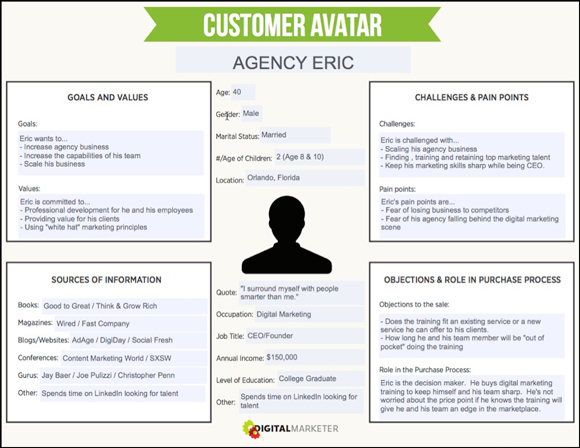
Your target customer profile should include your ideal clients’:
- Goals and Values
- Sources of information
- Demographic information
- And their challenges and pain points
For some startups and businesses, your ideal clients could be in multiple target markets.
What you want to do here is, create a separate profile for each target audience.
Then it’s up to you to decide how much of your marketing budget and time you want to allocate to each profile.
4. Carefully Select Your Traffic Sources
I have a friend who received about 10,000 visits from StumbleUpon within ten days.
Want to know how many of these people convert into customers?
The answer is none!
This is not because StumbleUpon traffic is bad.
I’ve read and heard people creating successful startups from the traffic they received from StumbleUpon.
It’s just that StumbleUpon traffic isn’t relevant to my friend’s website.
Most of these visitors have a very short attention span as they are just killing time on StumbleUpon.
His web page didn’t resonate with the few people who did read his article.
You should be very selective of the place your traffic is coming from.
At first, I recommend you do what’s already working for other startups in your niche.
For example, if you’re a local business, you’ll need to target users by city.
Google AdWords, Bing, and Facebook allows you to target users by city. Millions of local businesses and startups are already using these sites to reach their customers.
Listing your business on local business directories will also give you better customers.
Your SEO will also have to be local.
For example, if your business is a local restaurant in Baltimore, Maryland, you’ll want to target the keyword “restaurant in Baltimore” rather than “restaurant in Maryland.”
Targeting the city “Baltimore” gives you better customers than targeting “Maryland” as a whole.
If your business is B2B, you’ll get better clients marketing on LinkedIn than on Facebook.
Facebook is the largest social site in the world, but LinkedIn will drive you better business leads because it’s the largest professional network in the world.
In fact, LinkedIn drives over 80% of B2B leads.
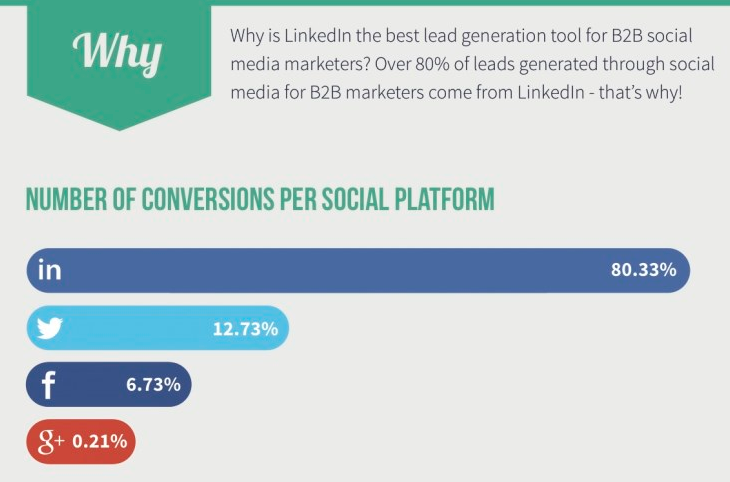
If your target market is men, Pinterest and Instagram is the wrong place to get traffic. Most of their users are females.
Your startup will be better off appearing on websites like The Art of Manliness, Man Made, and Man Vs. Debt.
And you can also reach much more men by advertising on Facebook.
5. Do A/B Testing On a Regular Basis
A/B Testing is the secret of successful marketers.
Most startups don’t do it.
Most startups, once they’ve created a nice website design, would leave it as it is for years until they feel the need to do a major redesign.
Some marketers would just keep doing what they are doing and never change.
For example, they will keep using the same ad copies, the same landing page, the same logo, header, layout, and marketing strategy. They will also send the same email format.
Wyatt Jenkins, the VP of product at Shutterstock wrote on the Harvard Business Review Blog:
“At Shutterstock, where I work, we test everything: copy and link colors, relevance algorithms that rank our search results, language-detection functions, usability in downloading, pricing, video-playback design, and anything else you can see on our site (plus a lot you can’t see).”
If Shutterstock, the world’s largest creative marketplace, with more than 750,000 customers is regularly doing a/b tests, it shows how important it is.
When you know about your target customers more than anyone else in your target market, it gives you an edge.
Just a simple, small change could increase your conversions.
For example, Makelaarsland.nl, a Dutch brokerage firm increased sign-ups by 85% just by replacing an image.
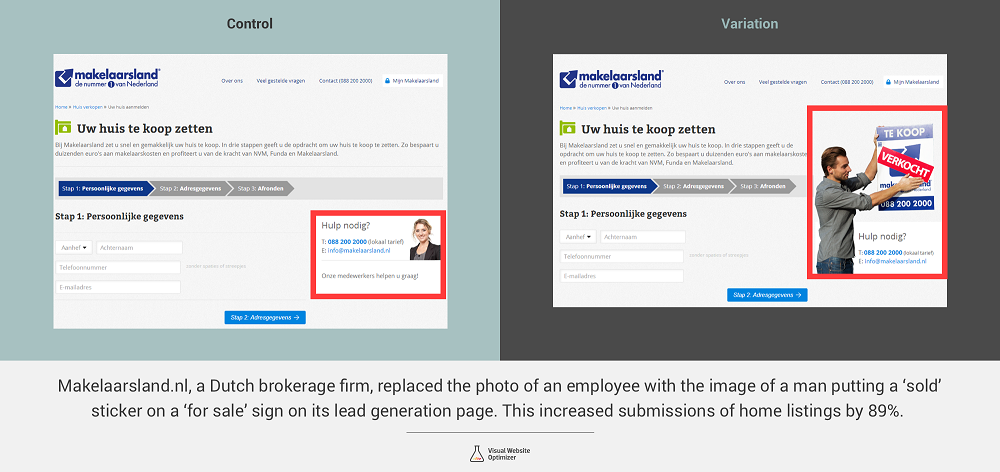
Even the big brands are always conducting a/b tests.
It is reported that Google makes about 1 – 2 changes every single day – that’s over 500+ a year.
“The algorithm changes that Google announces are only a tiny fraction of the changes they are making.”
Search algorithm changes are Google’s own way of a/b testing its search engine.
And Google also conducts other a/b tests outside of search results.
“It’s important to note that this may be a test which Google could reverse at any time. By the company’s own admission, it is always A/B testing. So it’s a good idea not to base your SEO efforts on these numbers until it’s known for sure if the test will become a permanent change.”

Salesforce Marketing Cloud (formerly Exact Target) increased their conversion by 40% just by changing the image on a landing page.
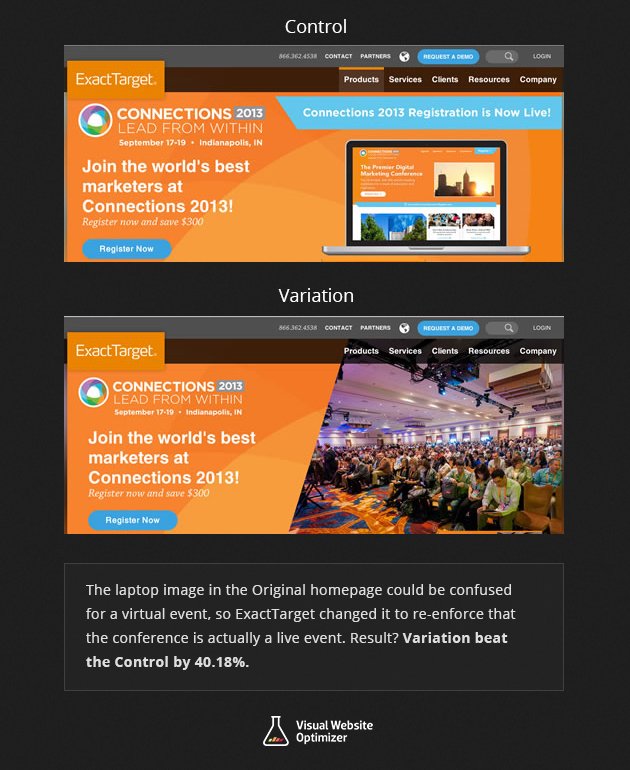
6. Delight Your Customers
Today’s customer service is part of marketing.
Customer service is the key to most successful marketing campaigns.
No matter how talented your marketing team is, if your customer service sucks, your startup will find it very difficult to convert customers.
A single tweet from an unhappy customer could ruin a month’s worth of marketing work.
There’s no substitute for an excellent customer service.
Repeat business is very important to growing a startup. And if your customer service is bad, there’s no way clients will return.
They might even ask for a refund if your business offers a money-back guarantee.
Your business reputation is also at stake when you have a poor customer service.
People will talk about their experience with your company when they are around their friends and family.
But when you deliver a great customer service?
People will also talk about their great experience with your company, but this time, it will have a big positive impact on how people see and think about your business.
Word-of-mouth marketing is the best. You can’t just put a price tag on it.
If your customers are happy, you can be rest assured that your employees, business partners, and investors will be happy as well.
Client satisfaction directly influences the working environment of business organizations.
It leads to decreased pressure of meeting targets and financial stability.
Employees can work in a comfortable corporate atmosphere, thus encouraging them to work to their maximum capacity.
Putting smiles on your customers’ faces is an essential part of marketing.
Related articles: marketing channels, customer behavior analysis, effective landing pages, design a high converting landing page
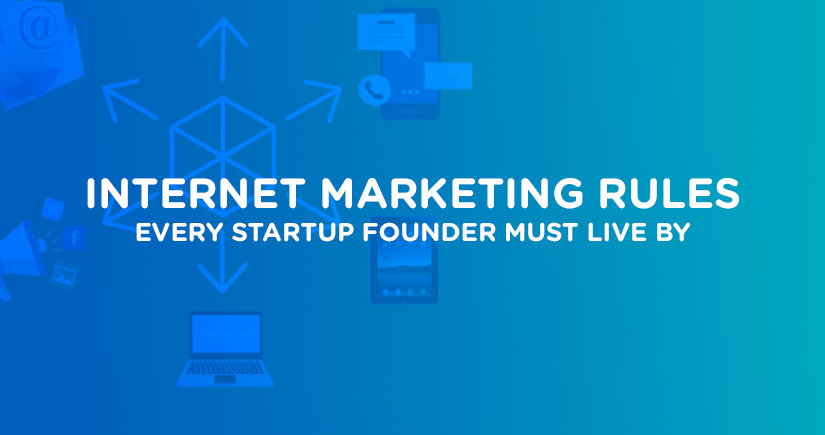
Everything is very open with a precise description of the challenges.
It was definitely informative. Your site is extremely helpful.
Thank you for sharing!